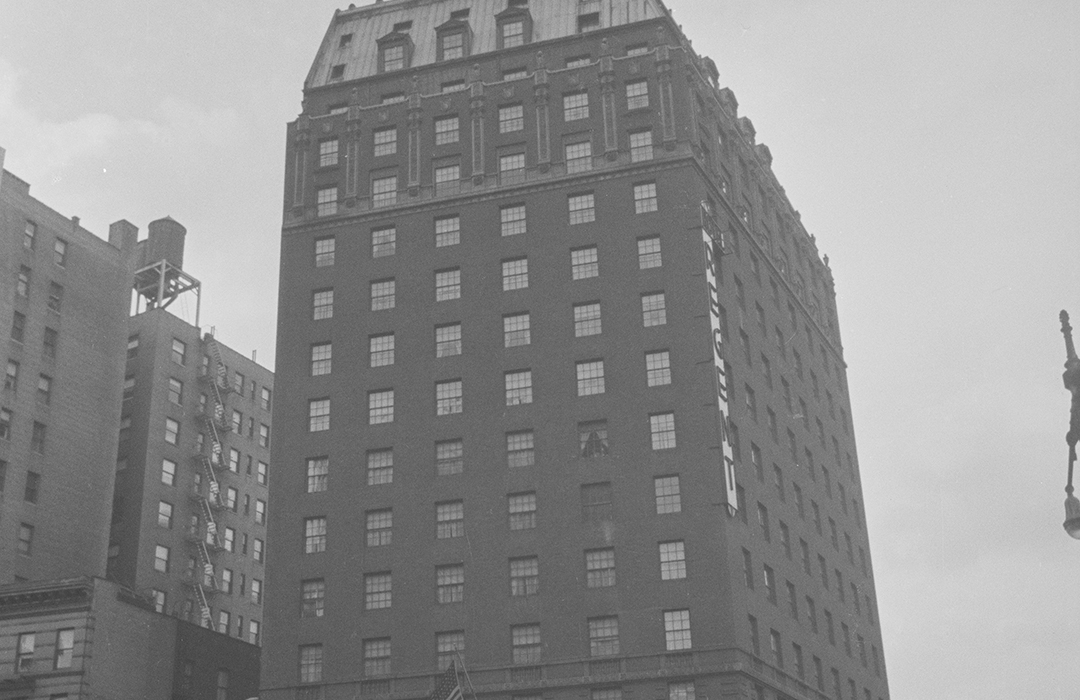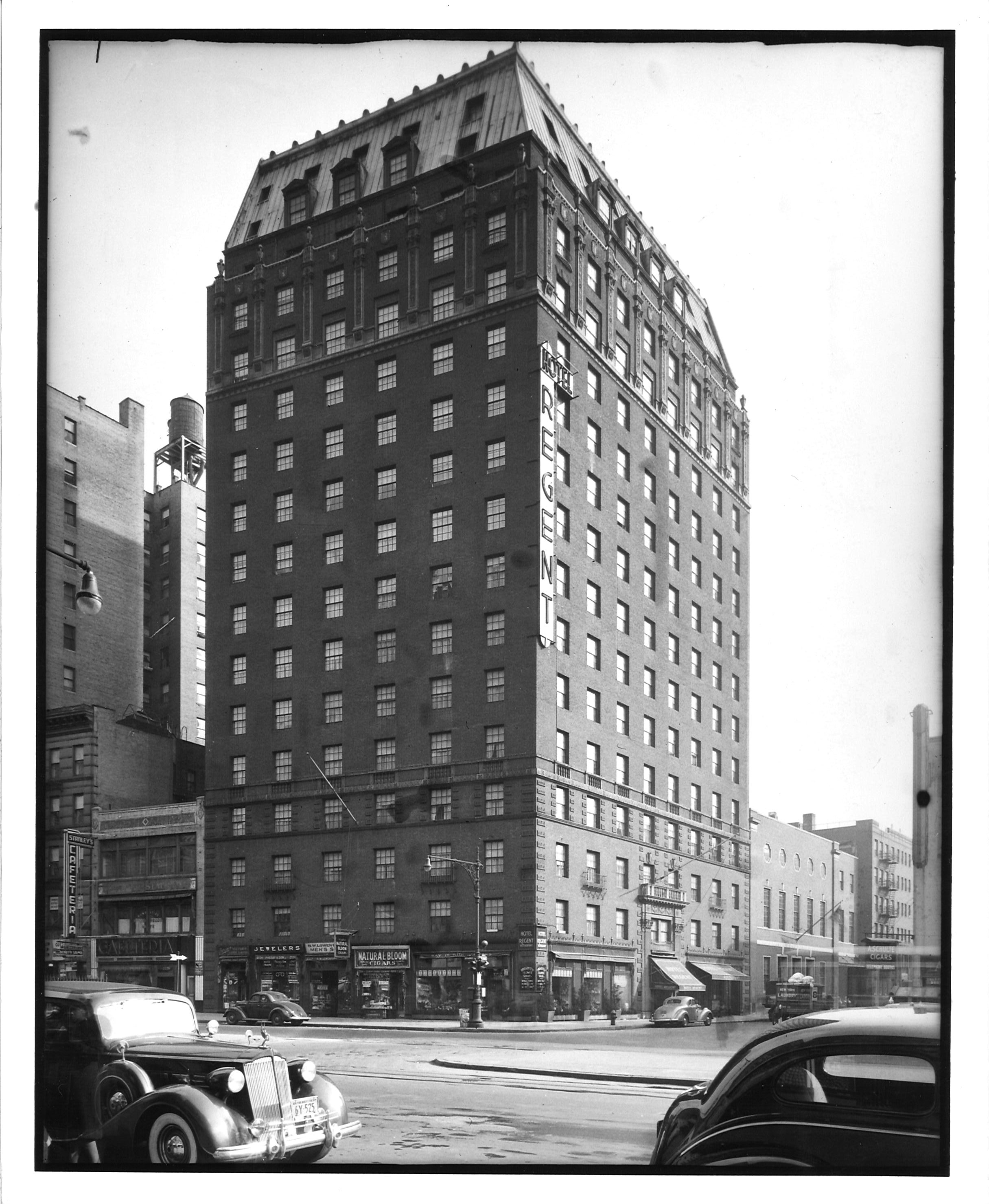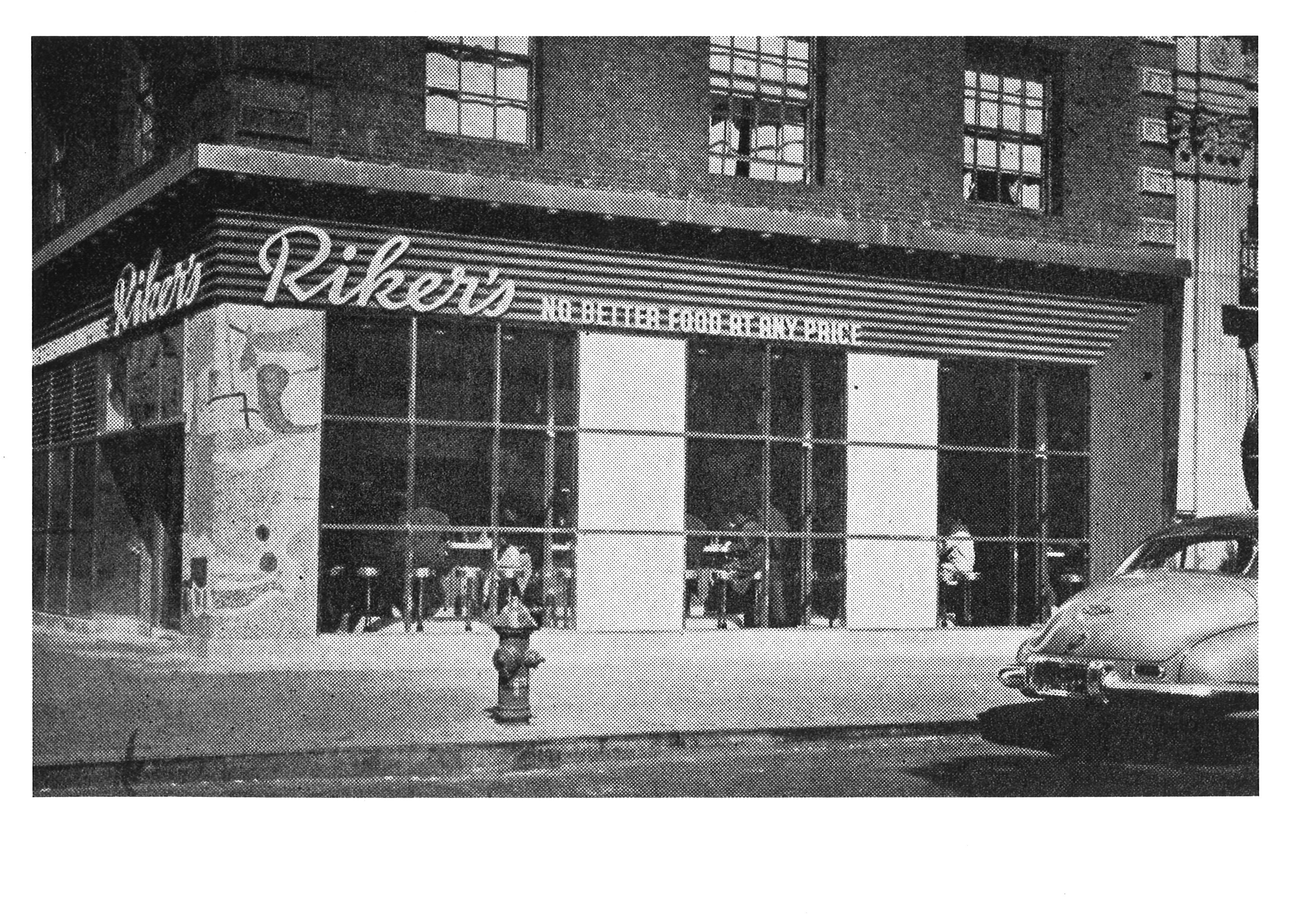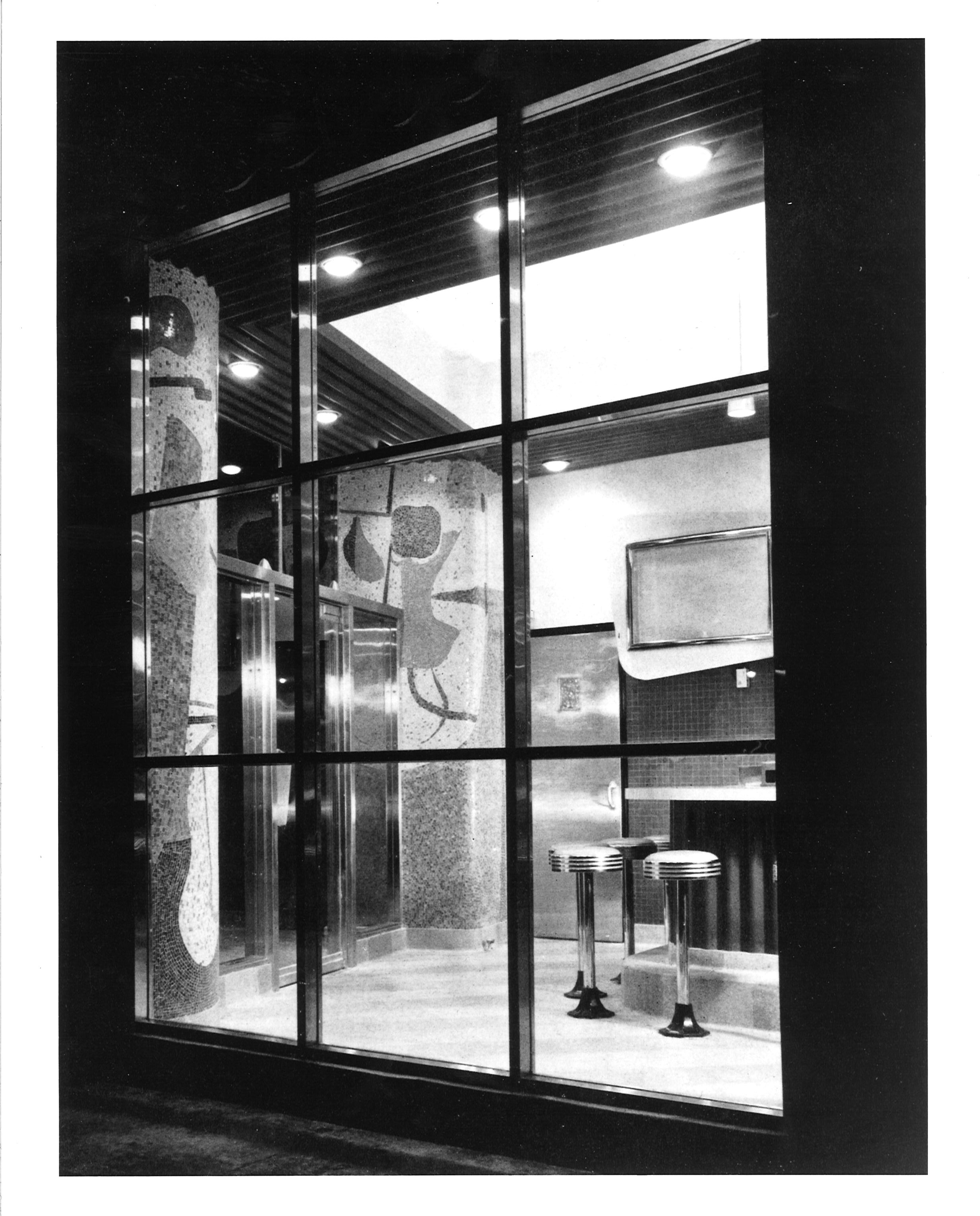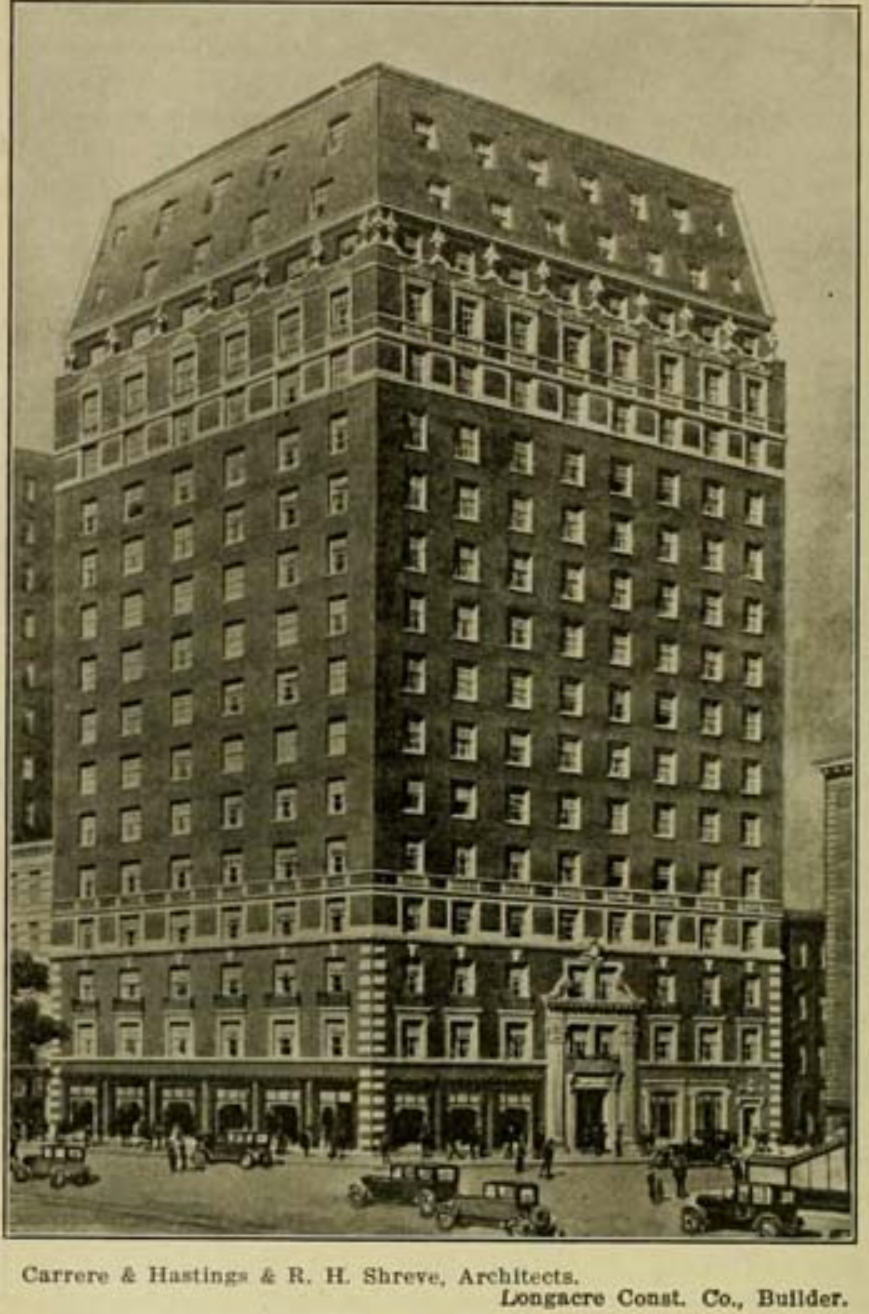
Broadway View Hotel
by Tom Miller
The Hope Baptist Church had stood on the northeast corner of Broadway and 104th Street since 1890, when it was purchased by the Metropolitan Tabernacle in 1917. Then, four years later in 1921, real estate operator and Metropolitan Tabernacle member Oscar Konkle had a grand idea.
Konkle was the head of Realty Sureties, Inc. A devout Christian, he was devoted to missionary work and had once worked with evangelist Billy Sunday. In 1921 the concept of “skyscraper churches” was spreading across the nation. By demolishing their churches and erecting large, income-producing structures with ground-level worship spaces, the congregations could ensure their financial stability. Konkle convinced the Metropolitan Tabernacle to demolish its vintage building and erect a 17-story hotel that would engulf a three-story church.
On March 7, 1922, The Morning Telegraph called the proposed structure, “a hotel for holy folk” and said it “will contain a church and Sunday school and will be filled with piety and resound, we doubt not, with the melody of Gospel hymns.” The New York Times added, “There will be strict supervision over the guests of the church-hotel, so that the moral tone of the place will be assured. It will cater to church members who desire a more solemn tone that the average New York hotel affords.”
But not long after the Metropolitan Tabernacle was demolished, the plans changed. Only a month later, on April 22, 1922, the Real Estate Record & Guide reported architects Carrère & Hastings, with Richmond H. Shreve of Shreve, Lamb & Blake, were designing a $1.5 million apartment hotel. “The building will contain approximately 307 rooms, which will be completely furnished for apartment hotel purposes,” said the article. There was no longer any mention of the church space.
The Broadway View Hotel opened in 1924. The structure’s rather boxy mass rose 14 floors before stepping back. Behind a terrace wall decorated with stone urns, the 15th floor supported a two-story mansard level. Stores, which produced extra rental income, were located along the sidewalk on Broadway.
There were 40 suites per floor, ranging from 1 to 8 rooms, within the Broadway View Hotel. All of them were deemed “non-housekeeping apartments” by the city, meaning there were no kitchens. As with many residence hotels, guests were either short- or long-term.
Seigel had told the hotel employee, “that an ape man swung in from his outside window, attacked him, and then disappeared through the widow. There is no fire-escape outside the window and only a very narrow ledge upon which a man might walk.”
Among the permanent residents was Louis Siegel, who lived on the 15th floor. On the night of January 4, 1929, neighbors heard sounds of a scuffle, then groans. The Syracuse Journal reported that employees of the hotel found him “lying half-conscious after being beaten by a blackjack.” Siegel told investigators an intruder had entered his window from the fire escape. The burglar attacked Siegel with a rubber pipe filled with lead. The newspaper recounted, “They struggled across the floor together, Siegel said, but he became unconscious from repeated blows.” He was taken to Knickerbocker Hospital for treatment.
Oddly enough, the Daily Star had a completely different, and bizarre, take on the story. It began its article saying, “Louis Siegel, a cloak and suit manufacturer, reported that ‘an ape man dressed in gray’ is at large in New York City. The reporter said that Seigel had told the hotel employee, “that an ape man swung in from his outside window, attacked him, and then disappeared through the widow. There is no fire-escape outside the window and only a very narrow ledge upon which a man might walk.”
A rather celebrated resident at the time, known only as Albert, shared an apartment with violinist Lorraine Evon. Albert was a canary. The couple performed together, and that year were broadcast on television. On September 24, 1929, the Standard Union reported, “Television, dream of the fanciful novelists, becomes an accomplished public achievement this week for the first time in history at the sixth annual World’s Radio Fair in Madison Square Garden.”
Patrons crowded into a seatless theater in the basement of the building where Radio-Victor was “demonstrating radio sight-and-sound pictures daily to fascinated multitudes.” Two 14-inch television screens displayed dancers, comedians, and other entertainers. “They moved. Their voices synchronized with their lips, and one realized for the first time that home receiving sets picturing the celebrated Rudy Vallee and Paul Whiteman and the rest are around the corner.”
Among the stars that night were Albert and Lorraine. The article said, “Most popular of all of the television artists was Albert, the canary, and Lorraine Evon, his sponsor. Lorraine played a violin. Albert followed the tune in soprano. But he was called back so often he went tenor at 9:10 and had to be sent home to the Broadway View Hotel and to bed.”
In December 1933, Oscar Konkle lost the Broadway View Hotel in foreclosure. It was sold at auction on December 4 and renamed the Regent Hotel. Riker’s restaurant moved into the corner commercial space. In remodeling the former store, the owners hired ceramicist Max Spivak to design glass mosaic murals. The Architectural Record was pleased with the outcome. The article said that Riker’s had given him little direction on the design of the murals, “merely stipulating that he use some panels of glass mosaic, seemingly de rigueur for New York restaurants just now.” The critic complained in general, “Lately the orgy of abortive misuse of glass mosaic, an intrinsically beautiful material and expensive, too ($7.00 a sq. ft), has caused conscientious architects to writhe and fume.”
But the article praised Spivak, saying he had “an imagination like Miro and a sense of color precision like Stuart Davis.” It praised his color choices of “spinach green, carrot red and butter yellow,” and said, “One customer marveled at the fact that the shapes took on new character each time she came in to eat.”
Although most of the residents continued to be upstanding, like Richard Malcom Adler, president of the Adler Veneer Corporation and first president of Temple Beth-El of Great Neck, New York, not everyone was. Living here in 1939 was Rae Belmont, arrested on April 19 for stealing $1,800 worth of furs “by the old double door ruse,” according to The New York Sun. The article said she was in a line-up at Police Headquarters, “denying the crime in the face of a record of ten arrests before the latest yesterday.”
This time she had selected furs at the Metuchen Fur Company on West 13th Street, then took the salesman to an office building on 57th Street, saying that after her husband had seen what she had chosen, he would write a check. She walked into an office and came out lamenting that her husband was very busy. Then, apparently struck with a sudden idea, she suggested, “Oh, let me have the furs. I can walk in on him even if you can’t, and I’ll bring the check out.” The New York Sun said, “She went into one door and out another which the salesman couldn’t see.”
…the article praised Spivak, saying he had “an imagination like Miro and a sense of color precision like Stuart Davis.”
In May 1956, the Regent Hotel was sold. The New York Times reported, “The building contains six stores and 300 rooms.” Almost two decades later, the property was purchased with the intention of converting it into “domiciliary facilities for the elderly.” The plans were capsized when the city placed a moratorium on additional residences for the elderly. Co-owner Murray Erlich told The New York Times, “I wanted to convert, but the city said no.” On September 15, 1974, the newspaper remarked, “As a result, the Regent on Broadway at 104th Street seems destined to become largely a welfare relocation facility.”
As a welfare hotel, the Regent brought problems to the neighborhood. Foot patrolmen were routinely pelted with rocks, bricks, and bottles from the roof or windows. The practice ended in tragedy on the night of June 17, 1975. At around 10:00 that night a policeman was nearly hit by a half-gallon milk bottle filled with water. Twenty minutes later, a two-and-a-half-year-old toddler, Kalle Etheredge, was passing by the building with her mother, Tinetta, when a half-gallon wine bottle struck and killed the child.
Two days later 19-year-old Julia Vargas, who lived on the 7th floor, was arrested for the crime. She told police she had been cleaning the bottle when she was distracted by a noise. The bottle, she said, slipped from her fingers and fell out the window. Vargas was charged with negligent homicide and manslaughter.
The Regent Hotel was closed by the city in 1989. But, in January 1991, it reopened to the ire of locals. The New York Times reported, “Community leaders remember the Regent as a festering sore in the neighborhood.” The article said, “To hear some residents describe it [the Regent Hotel] loomed like a dragon spewing muggers, rapists, prostitutes and pimps.”
The protests continued for two years. And then, on October 17, 1993, The New York Times reported that the Volunteers of America was taking over the operation. Neighbors were not convinced the change would help.
But things improved. Even though a year later the hotel population, promised not to exceed 140 families, was slightly higher than that, on October 8, 1995, The New York Times remarked, “By most accounts, conditions in and around the hotel have improved marginally since the reduction [of families housed].”
Today known as the Volunteers of America Regent Family Residence, much of the building’s 1924 exterior integrity is intact. And, miraculously, a portion of the Max Spivak’s 1933 glass mural survives in the corner Ben & Jerry’s store.
Tom Miller is a social historian and blogger at daytoninmanhattan.blogspot.com
Building Database
Keep Exploring
Be a part of history!
Think Local First to support the businesses at 2720 Broadway:
Meet Stephen Miotto!

